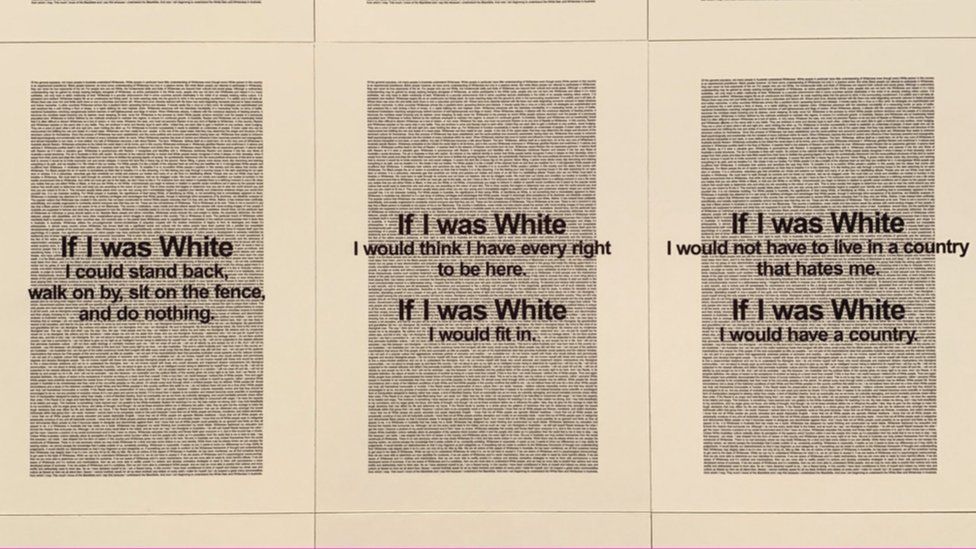-

-
-
Loading

Loading

In an art gallery in Auckland, New Zealand, a collection of Aboriginal and Torres Strait Islander art is on display. The exhibition includes a thought-provoking piece by artist Vernon Ah Kee, titled "If I Was White," which highlights the experiences of Aboriginal Australians. The artwork raises questions about discrimination and the need for Indigenous representation. The exhibit has sparked conversations about the upcoming Australian referendum on Indigenous people's rights, known as the Voice. However, polls suggest that the proposal is likely to fail. New Zealand, like Australia, has faced its own issues with colonialism and the marginalization of its Indigenous population, the Māori. Despite these similarities, there are significant differences between the two countries. New Zealand has a smaller population and a more widely understood Māori culture. Additionally, Māori people have long had political representation, unlike Aboriginal Australians. In New Zealand, the Treaty of Waitangi, the nation's founding document, recognizes Māori rights and has led to some redress of historical grievances. In contrast, there is no treaty with Indigenous Australians, and the British Crown never recognized them as sovereign. The debate over Indigenous representation and rights in Australia has been divisive, fueled by misinformation and a lack of understanding of the country's brutal colonial history. This has hindered progress and reconciliation efforts. Overall, the experience of Indigenous peoples in both countries highlights the need for greater awareness, education, and action to address historical injustices.